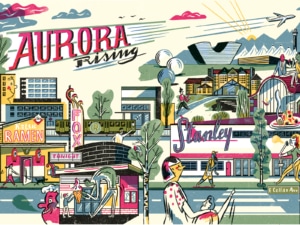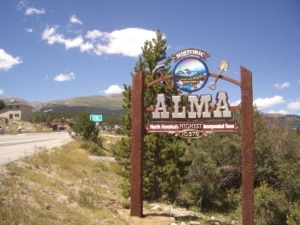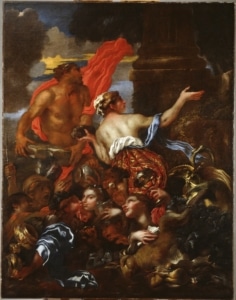DCPA NEWS CENTER
Enjoy the best stories and perspectives from the theatre world today.
Enjoy the best stories and perspectives from the theatre world today.
From the archives: this article was originally published on August 11, 2022
You wouldn’t know it from the lack of pristine blue sea waters, but Denver has some Greek to it. Beyond Greek food, you can find architecture, art, and more, inspired by the Grecian culture.
The most distinctive Greek-inspired architecture in Denver is in Civic Center Park with the Greek Theater and Colonnade of Civic Benefactors on one end and the Voorhies Memorial on the other with the signature tall fluted columns. The park is a National Historic Landmark because of these buildings.
Frank Edbrooke was a well-known Denver architect early in the city’s development during the early 1900s. The Greek Theater was designed by his team and constructed in 1919.
The John H.P. Voorhies Memorial, constructed in 1921, sits across from the theater structure. Inside each of these you will find murals depicting life in the West by artist Allen Tupper True.
Other examples of Greek Revival and Neoclassical architecture in Denver that is reminiscent of ancient Greek temples include:
All photos above by The Masonry of Denver

Illustration byJakob Hinrichs for 5280 Magazine
The city of Aurora, on the eastern flank of the Mile High City, spreads across three counties and has a population hovering around 400,000. Aurora is the Latin word for dawn and is derived from the Greek for “sunrise.” For those early risers who watch the sun come up, you are likely to be looking at Aurora as the sky brightens each day.
Chances are that you have not heard of Akron, Colorado, roughly 100 miles east of Denver, but the name in this context might give you a giggle: Akron is Greek for “elevation” or “point.” Yes, far from the 14,000-foot peaks to the west in the Rocky Mountains, this town was named for being the highest point on the railroad line east of Denver. The elevation is 4,659 feet above sea level.
 Perhaps Alma, Colorado should have been named Akron though because this town of about 300 souls sits at 10,361 feet above sea level. The word or name Alma is believed to be a derivation of the Greek word for “salt water” and in Latin, almus, is translated to “soul” or “nourishing.” In this case, the town was named after the wife of a local merchant.
Perhaps Alma, Colorado should have been named Akron though because this town of about 300 souls sits at 10,361 feet above sea level. The word or name Alma is believed to be a derivation of the Greek word for “salt water” and in Latin, almus, is translated to “soul” or “nourishing.” In this case, the town was named after the wife of a local merchant.
The name Delta, a town of about 9,000 on the Western Slope of Colorado, is also the fourth letter in the Greek alphabet.

“Deucalion and Pyrrha” by Giovanni Benedetto Castiglione
If you have little ones, they might enjoy the “Storytime with a Greek Myth” at The Denver Art Museum. Three and five-year old kiddos listen to the story of Deucalion and Pyrrha and then look at the painting, “Deucalion and Pyrrha” by Italian painter Giovanni Benedetto Castiglione, to point out visual elements recognized from the story. Spoiler alert: the myth is similar to the biblical story of Noah’s Ark. There’s also a version of this class for children in grade K-5 in which there is more discussion, and a version for grades 6-12.
As you explore Denver and beyond in Colorado, look for the surprising elements of Greek history in the details.
